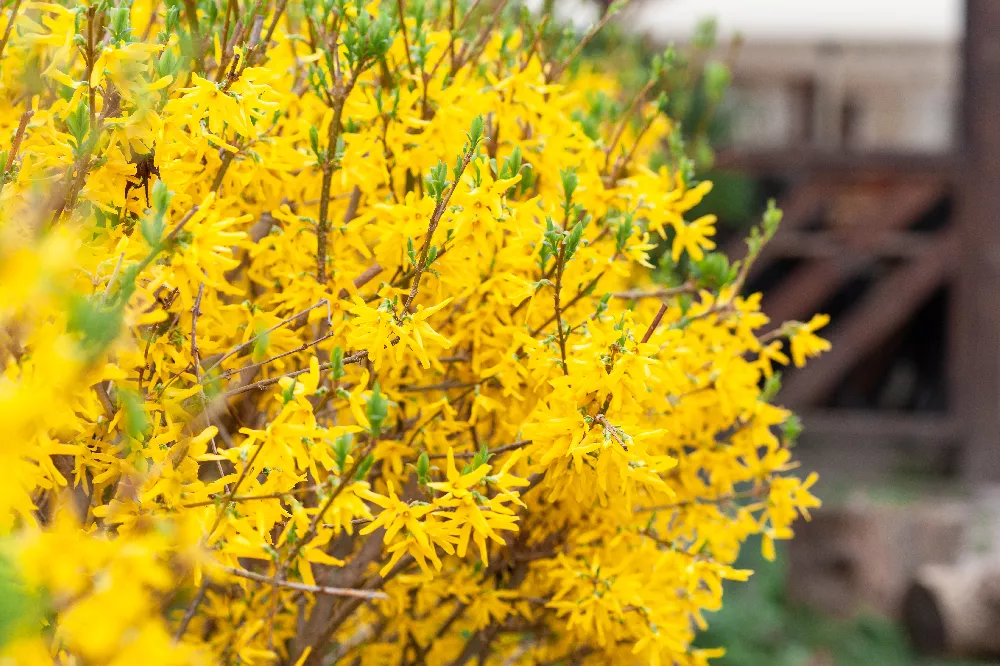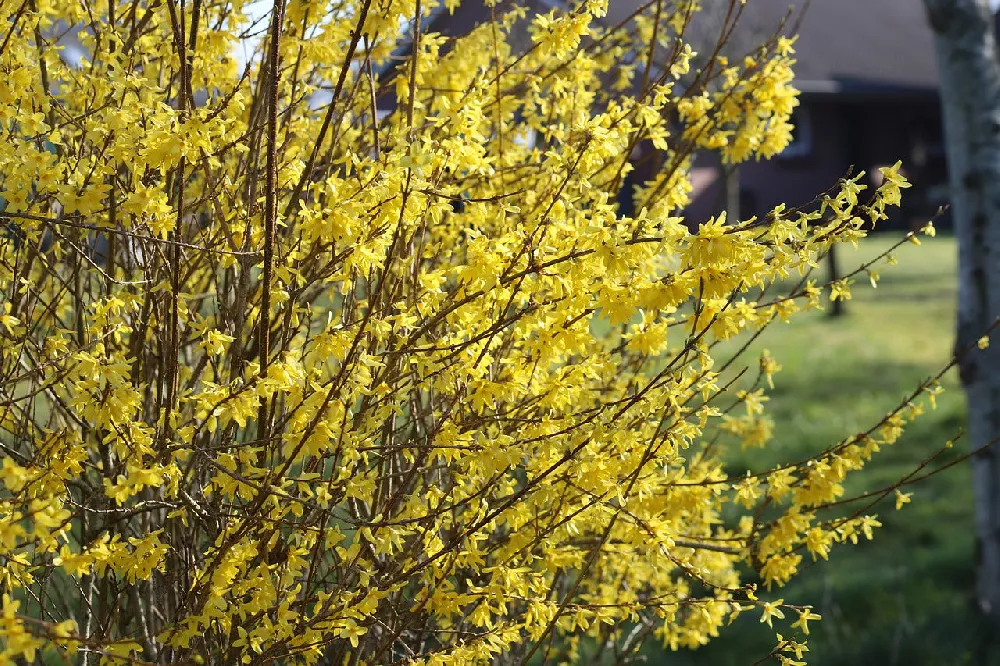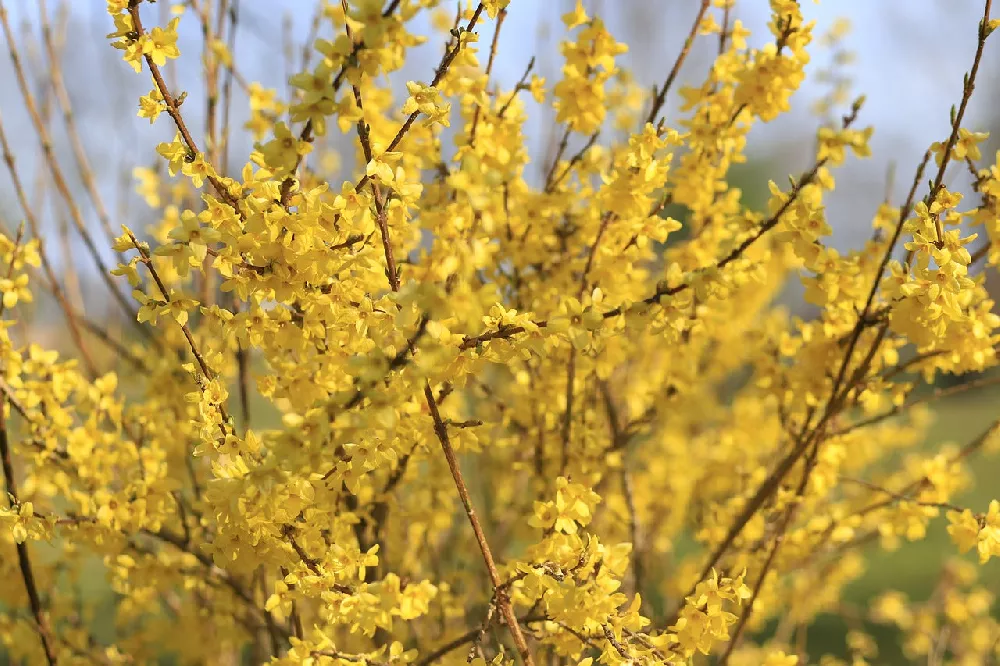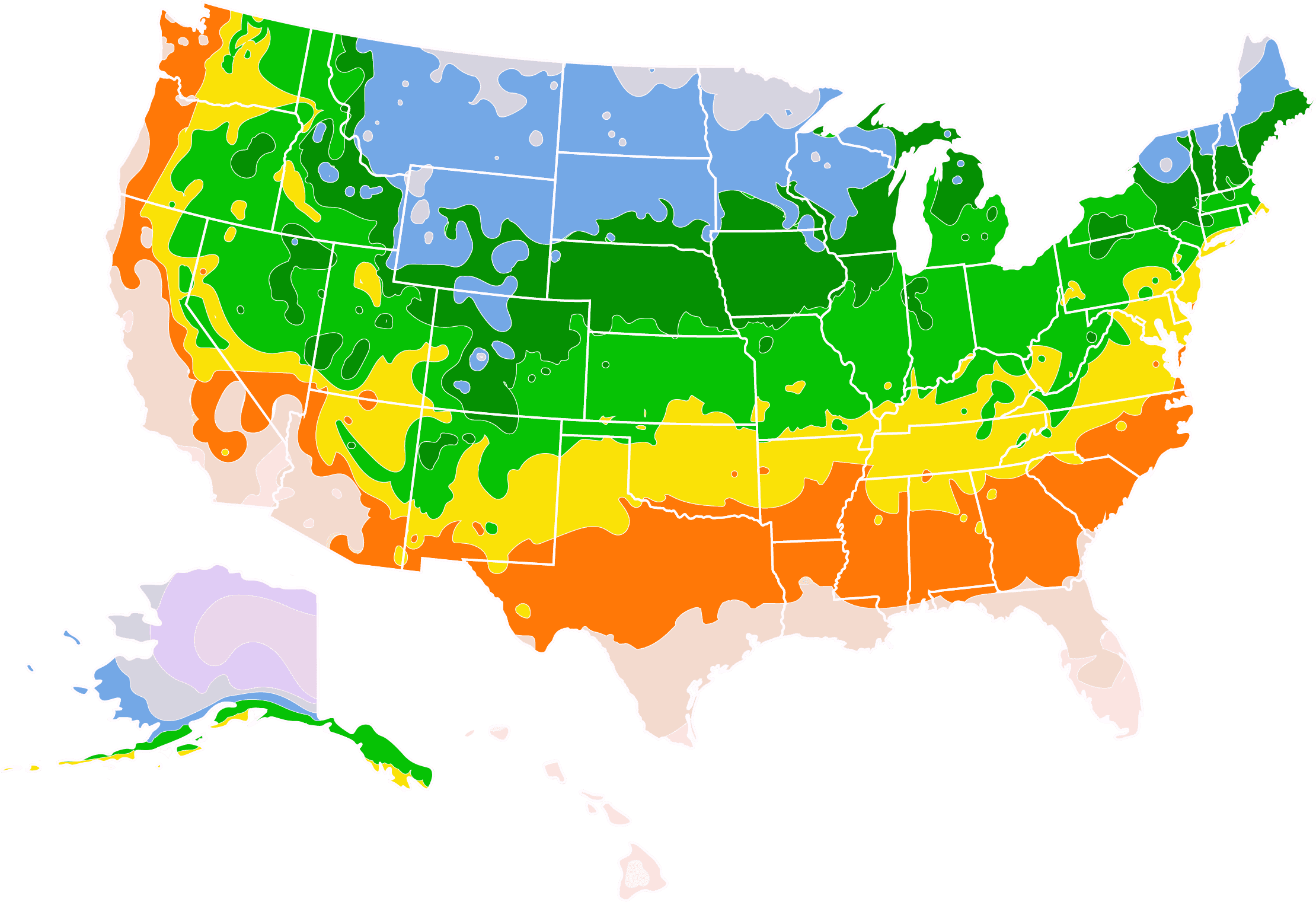- Home >
- Ornamental Plants >
- Lynwood Gold Forsythia
Lynwood Gold Forsythia for Sale - Buying & Growing Guide
- Ships in 1-2 days
- 1-Year Warranty Eligible
- Pots or accessories are not included unless specified in the product options.
Shipping Details:
Once your order is shipped, you’ll receive an email with a tracking number and estimated delivery date. Most orders ship immediately, but some items are seasonal and may only ship in spring or fall. These products are noted on the website.
Is there a more beautiful harbinger of spring than a forsythia? We don't think so, and the Lynwood Gold forsythia, Forsythia x intermedia, may just be the best example of the species. In early spring, your bushes will be covered with a myriad of small, golden-yellow blooms that cover the branches. When blooming is done, the shrub leafs out into a full, rounded canopy that adds texture and form to your garden or hedge. In fall, the leaves turn a vibrant yellow, with just a hint of red and orange, making for another spectacular display. The Lynwood Gold forsythia is a fast grower, putting on 2 to 3 feet per year, so it's a great choice if you're building your garden from scratch and need to fill large areas. A mature forsythia will reach a height of 8 to 10 feet, so this easy-to-grow shrub works well when you need a tall hedge or mass plantings. Here are some other reasons to bring a Lynwood Gold forsythia to your yard:
- This hardy shrub grows throughout most of the continental U.S.
- It can be left unpruned or pruned into a more formal shape or hedge.
- The Lynwood Gold forsythia received an Award of Merit from the Royal Horticultural Society.
Plant Care
Sunlight

The Lynwood Gold forsythia thrives in partial to full sun — four or more hours of direct sunlight each day.
Watering
Your Lynwood Gold forsythia needs about an inch of water a week, either from rain or supplemental watering.
Fertilizing

Fertilize using a high-phosphorus formula, or use a balanced, 10-10-10 with additional rock phosphorus.
Planting and Care
Planting instructions
Site your forsythia where it will get partial or full sun — at least four hours of direct light a day — in soil that drains well and is rich in organic material. Unpot your shrub, and tease out any encircling roots, which can girdle the plant and slowly kill it. Dig a hole that’s as deep as the root ball and twice as wide. Place the shrub in the hole, spreading out the roots. Holding the shrub upright and steady, fill in around it with topsoil, tamping down as you go to eliminate air pockets. Water thoroughly. Apply a 2- to 3-inch layer of organic compost, such as bark chips, around the root zone to conserve moisture and hinder weed growth, but keep it from touching the trunk to avoid rot.
Watering and nutrients
Water your newly planted forsythia a few times a week until you see robust new growth on the branches. Then cut back to once a week for the rest of its first season. Once established, your shrub will only need supplemental watering during very hot or dry weather — it appreciates about an inch of water a week, either from rain or supplemental watering. Fertilize your forsythia in spring with a balanced, slow-release product designed for landscape trees and shrubs. To encourage blooming, you can sprinkle the soil with a phosphorus amendment if you wish.
Pollination
SInce forsythias bloom before most other flowers, they are attractive to bees and other early-season insects looking for pollen, and they act to pollinate the flowers. This results in small brown capsules that contain the seeds. The Linwood Gold forsythia is a hybrid, however, so it will not grow true to seed.
Pruning
Left unpruned, your forsythia will assume a somewhat wild, unkempt look, which may work if, for example, you’re naturalizing a section of open meadow. Most gardeners prune their forsythia shrubs back after they bloom. Prune out any dead, diseased, or damaged branches first. Next, prune back the oldest wood to about 4 inches from the ground. Then trim back one-quarter to one-third off the younger branches, which will encourage new growth the following year.
Pests and diseases
The Lynwood Gold forsythia is an easy-care shrub that is resistant to most insect pests and diseases. You may see minor evidence of common pests, such as aphids and spider mites, but your shrub should be unharmed by mild infestations. If insect pressure increases, consider releasing beneficial insects, such as ladybugs or lacewings, which feed on these pests. Diseases of the forsythia include leaf spot and crown gall. Prune out any galls you see — watch for small swellings on the branches. Keep the ground around your shrub free of leaf litter and debris, and avoid wetting the leaves when you water to avoid fungal growth.
Achieving maximum results
Knowing how to best use a Lynwood Gold forsythia in your garden will help you achieve maximum results. There are numerous ways this flexible shrub can be shown off in any landscape. Since it withstands city pollution well, it can make an excellent anchor plant in a smaller urban garden. When planted in a row, it’s a great formal or informal hedge, depending on how vigorously you prune it. Mass plantings are spectacular in the spring. It’s good for erosion control on a hill or sloping area. It is also a great addition to cottage gardens, where it provides height and texture against which you can show off smaller flowering perennials.
FAQs
How big does a Lynwood Gold forsythia get?
When mature, a Lynwood Gold forsythia may reach a height of 8 to 10 feet, with a mature width of 8 to 10 feet. You can control this growth by judicious pruning after the shrub has flowered. An annual pruning can, for example, keep your forsythia to roughly 6 feet if you wish to use it as a privacy screen or hedge.
Where can I grow a Lynwood Gold forsythia?
This attractive shrub can be grown throughout most of the continental U.S. and thrives in USDA hardiness zones 4 through 8. It can handle temperatures down to -20 degrees Fahrenheit. If you live in a region that gets colder than that, you may be able to grow this shrub in a large container that you bring inside in winter.
Is the Lynwood Gold forsythia an evergreen?
The Linwood Gold forsythia is a deciduous shrub, which means that in the fall, the leaves will first turn color, and then drop for the winter. This does not mean the shrub has no winter interest — its naturally arching branches can provide stunning textural interest against a background of snowy weather.
You can't add more Product Name - Product size to the cart.
OK



